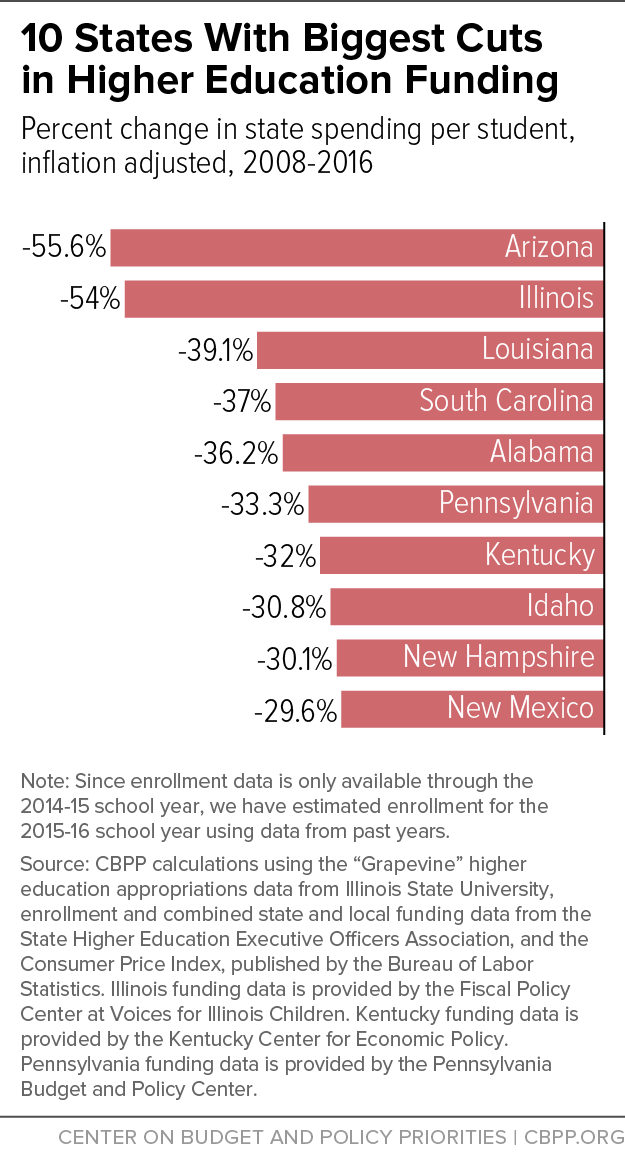BEYOND THE NUMBERS
With a new academic year approaching, we’ve updated our major report on state funding trends for public colleges and universities, which shows that 46 states are spending less per student than they did before the recession. While most states have boosted per-student funding in the last year, 12 states cut it. Overall, funding for public two- and four-year colleges is almost $10 billion below its pre-recession level, after adjusting for inflation.
Our update reflects developments in one of those 12 states, Illinois, where an agreement between the governor and lawmakers earlier this summer ended a year-long budget impasse that forced public colleges to go most of the 2015-16 academic year with no state financial support. Lawmakers had approved just under $600 million in state support in April solely for expenses in the 2015-16 academic year. The budget agreement included another $1 billion for additional expenses in 2015-16, plus some funding for the first half of next year.
These resources fall far short of the public investment Illinois used to make to help its residents get the benefits of a college degree. Including the recent funding, state support for higher education in Illinois fell 37 percent per student from 2015 to 2016. Funding is down 54 percent per student since the 2007-08 school year, when the Great Recession hit; only Arizona has cut more (see graph).
Illinois spends around $3,500 less per student on its college campuses than it did just before the recession – more than twice the average cut nationally of roughly $1,600 per student.
A big reason for Illinois’ budget battle was that an income tax increase expired in 2015, and policymakers chose not to reinstate it or otherwise raise the needed revenue. The impacts of state underfunding include:
- Moody's Investors Services has downgraded the bond ratings of several public universities in the state, making it harder for them to borrow money for facilities and improvements. Moody’s cited concerns over their financial health in the wake of reduced state support.
- Chicago State University, a predominantly black institution, had to lay off nearly a third of its staff.
- Southern Illinois University will eliminate more than a quarter of its graduate teaching assistant positions next school year and leave 50 vacant faculty positions unfilled.
More and more jobs require a college degree, making public investment in higher education a key to the country’s economic future and to the prospects of millions of young Americans. Illinois and other states need to provide those investments and help their residents thrive.

